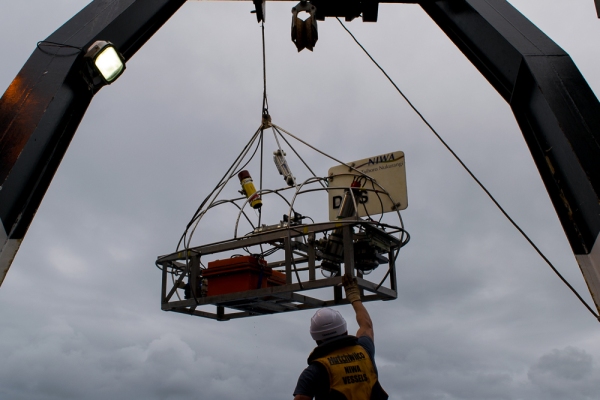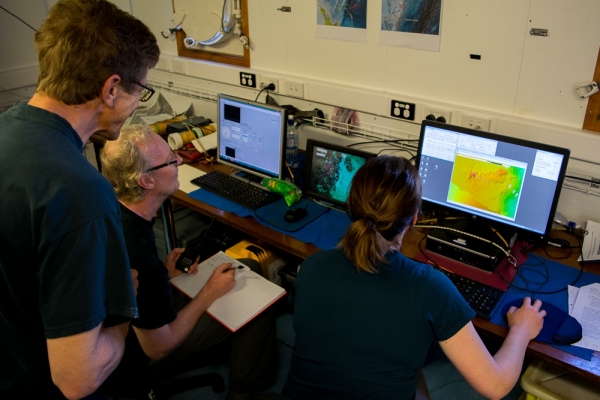We have multiple tools on ship for the voyage to sample the ocean, from nets, traps, sleds and trawls to the deep towed camera (imaging) system (DTIS).
DTIS is a very useful tool! It allows us to get a realtime look at the seafloor before sampling it with other equipment, like trawls or the epibenthic sled.
The camera system has a video camera, and a stills camera, that takes a photo of the seafloor every 15 seconds. As well as the two cameras, there flood lights for the video camera, and a high powered flash for the stills camera, with, two large batteries to power all this. All this equipment has to be contained in watertight housings, which are rated down to 6000m (which is really deep!). To date the deepest DTIS deployment has been to 3500m. On this trip we have successfully deployed DTIS to 3000m at Raoul and Macauley Islands.
All the camera equipment and batteries are contained in a steel frame, within roll cage and attached to a winch cable so that it can be lowered to the seafloor and towed.
The roll cage is really important should DTIS come in contact with the seafloor, or unexpected cliff walls like it did just the other day. Thankfully the roll cage did its job, the winch driver was skilled and DTIS successfully completed the transect and came back to the surface a little battered and bruised, but definitely not broken.
Fortunately we have some very capable engineers on board and they were able to replace the bent pieces and now DTIS is as good as new, if not better!
Inside the winch cable there is a wire that provides a live feed of the video (low resolution at 1 frame per second) allowing the winch driver to see how far off the seafloor they are, and whether they need to get closer or further away as the seafloor undulates. Scientists also watch this feed and have a connected computer programme which allows them to make notes of what they see as the DTIS travels along the seafloor. This gives them an immediate illustration of what the half mile stretch of seafloor DTIS just covered is like.
From this initial footage the scientists are able make an informed decision about what sort of gear, be it sled or beam trawl, is most suitable for the seafloor topography.



